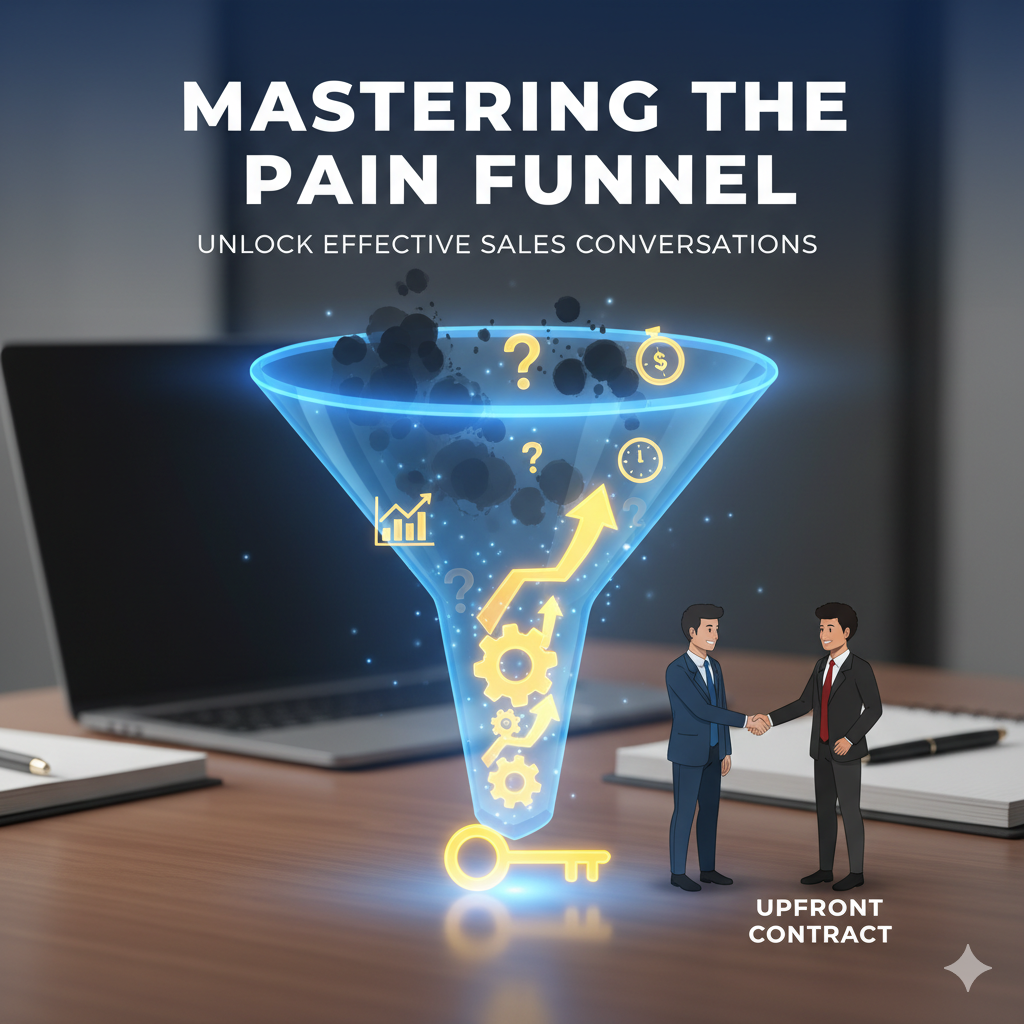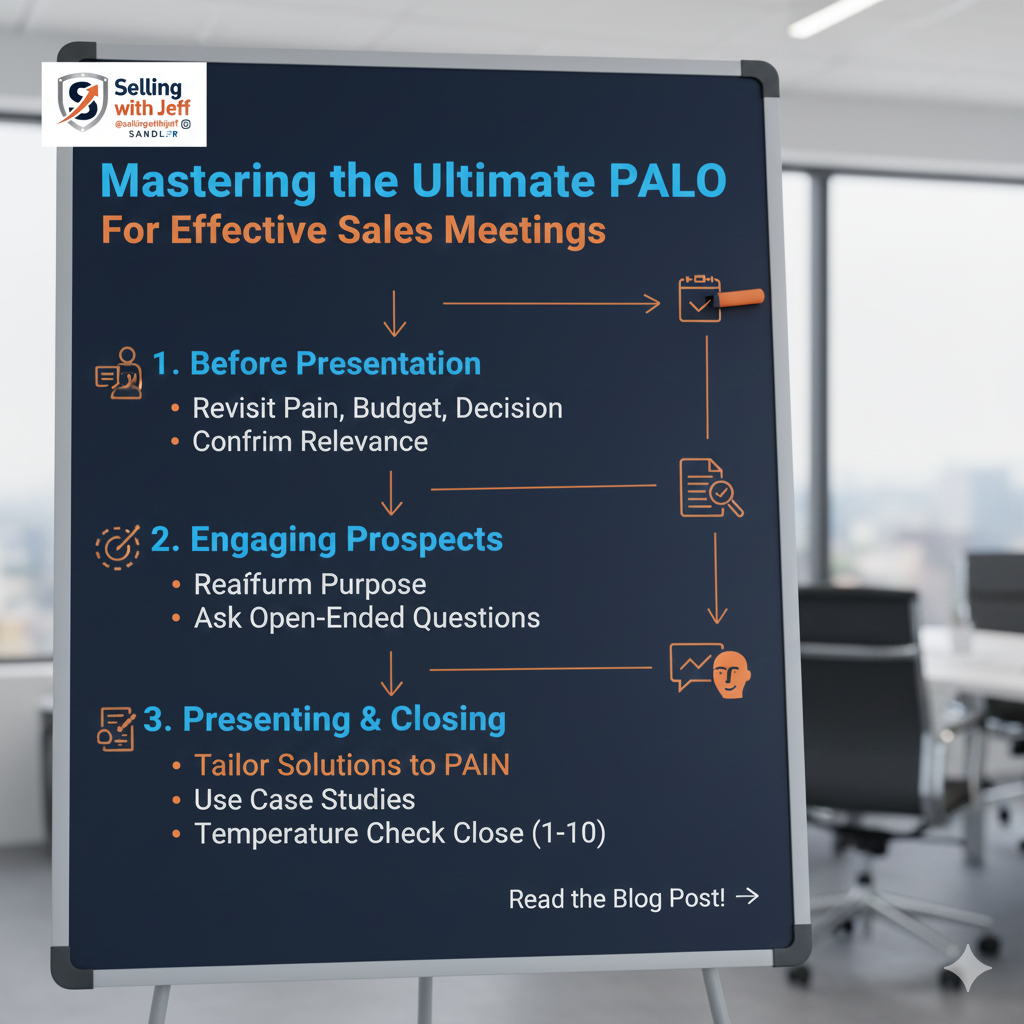Mastering the Pain Funnel for Effective Sales Conversations

Unlock the Potential of Your Sales Conversations by Mastering the Pain Funnel Technique
Setting the Stage: The Importance of the Upfront Contract
In the world of sales, establishing a solid foundation for your conversations is paramount. This is where the upfront contract comes into play. An upfront contract is a mutual agreement between the salesperson and the prospect, outlining the expectations and agenda for the meeting. It sets the stage for a productive conversation, ensuring both parties are aligned and comfortable.
The upfront contract also lowers the prospect's guard, making them more open and honest about their needs and challenges. By clearly stating that either party can say no if they feel the fit isn't right, you build trust and transparency. This not only fosters a positive rapport but also paves the way for a more in-depth exploration of the prospect's pain points.
Step-by-Step Guide to Navigating the Pain Funnel
The pain funnel is a structured approach to uncovering the true needs and pain points of your prospects. It consists of a series of questions designed to dig deeper into the challenges they face. Here's a step-by-step guide to navigating the pain funnel:
- Tell me more: Start by asking the prospect to elaborate on their challenges. This opens up the conversation and provides a broad understanding of their situation.
- Give me an example: Request a specific example to gain a clearer picture of the issue. This helps in understanding the context and the impact of the problem.
- How long has this been going on?: Determine the duration of the problem to assess its severity and urgency.
- What have you tried to do to solve it?: Explore the solutions the prospect has attempted, which gives insight into their efforts and resourcefulness.
- Did that work?: Evaluate the effectiveness of their previous attempts to solve the problem.
- What's the financial impact of this problem?: Assess the monetary implications to understand the gravity of the issue.
- Who else is aware of this problem?: Identify other stakeholders involved, which helps in understanding the broader impact.
- How is this affecting you personally?: Gauge the personal toll the problem is taking on the prospect.
- Is doing nothing an option?: Finally, determine if the prospect is committed to making a change or if they might continue with the status quo.
Common Challenges and How to Overcome Them
Navigating the pain funnel isn't without its challenges. Salespeople often face obstacles that can derail the conversation. Here are some common challenges and how to overcome them:
- Time constraints: Ensure you allocate enough time for a thorough conversation. Rushing through the pain funnel can lead to missed opportunities.
- Prospect's reluctance: Some prospects may be hesitant to open up. Build rapport and trust early in the conversation to make them feel comfortable.
- Getting off track: Prospects may go off on tangents. It's crucial to gently steer the conversation back to the pain funnel questions.
- Uncomfortable questions: Some questions may be challenging to ask. Practice and familiarity with the pain funnel can help you ask these questions confidently.
Practical Tips for Seamlessly Integrating the Pain Funnel
Integrating the pain funnel into your sales conversations can significantly enhance your effectiveness. Here are some practical tips to make this process seamless:
- Practice regularly: Familiarity with the pain funnel questions is key. Practice with colleagues to build confidence.
- Use cheat sheets: Keep a list of the pain funnel questions handy during your conversations, especially if you're new to this technique.
- Be genuinely curious: Approach each conversation with a genuine interest in understanding the prospect's challenges. This will make the questions feel more natural.
- Stay flexible: While the pain funnel provides a structure, be adaptable. Every conversation is unique, and sometimes you'll need to deviate from the script.
- Always summarize and test: After going through the pain funnel, summarize the key points and test the prospect's commitment to making a change.
By mastering the pain funnel technique, you can unlock the full potential of your sales conversations, uncovering the true needs and pain points of your prospects and ultimately closing more deals.


